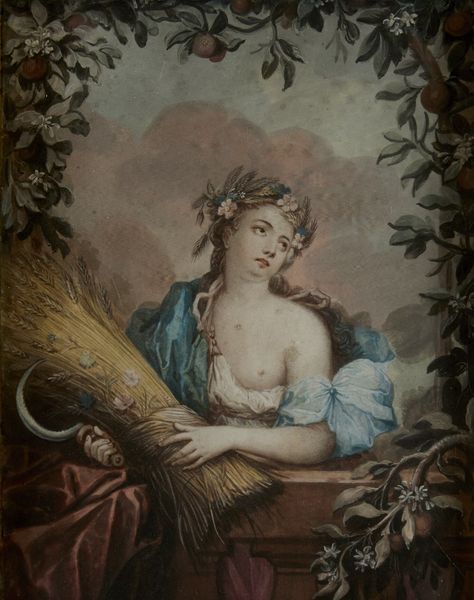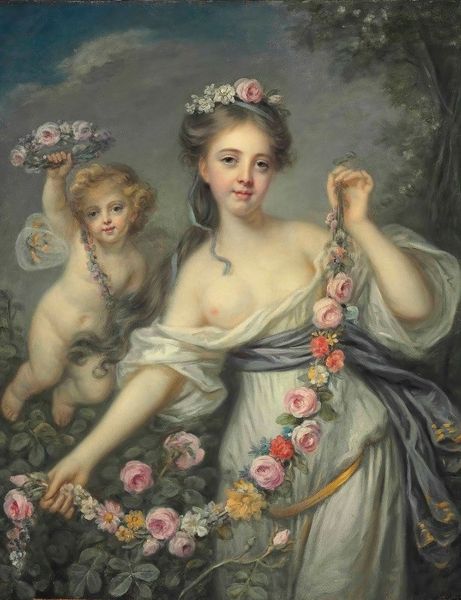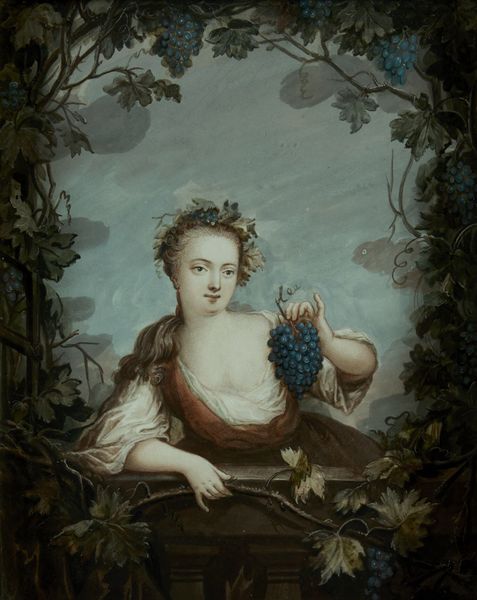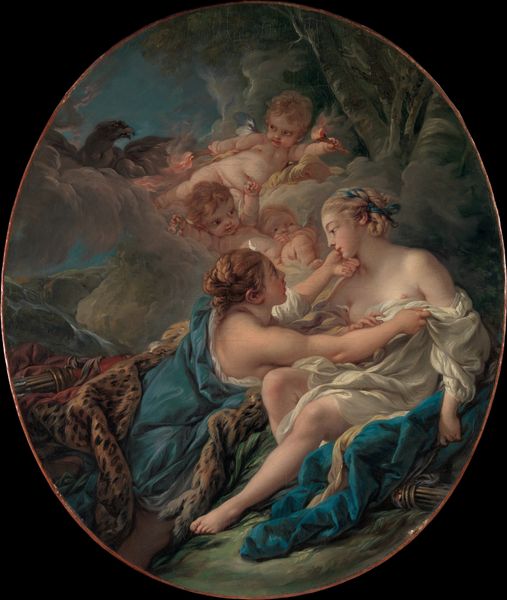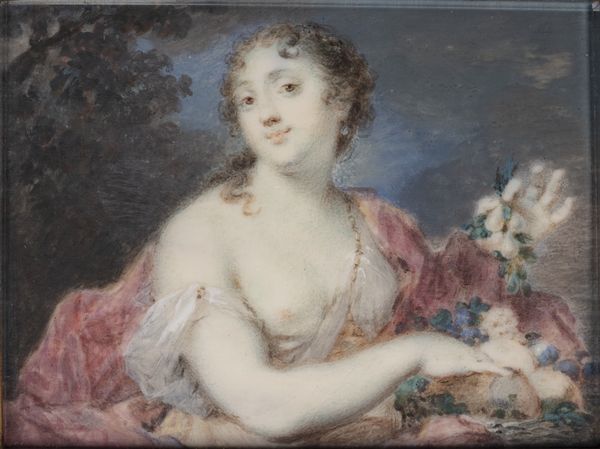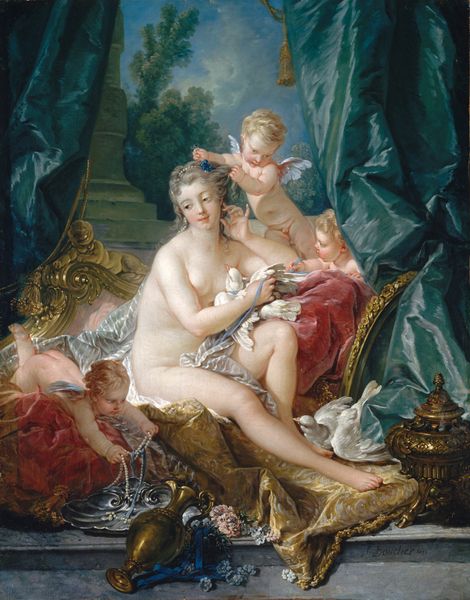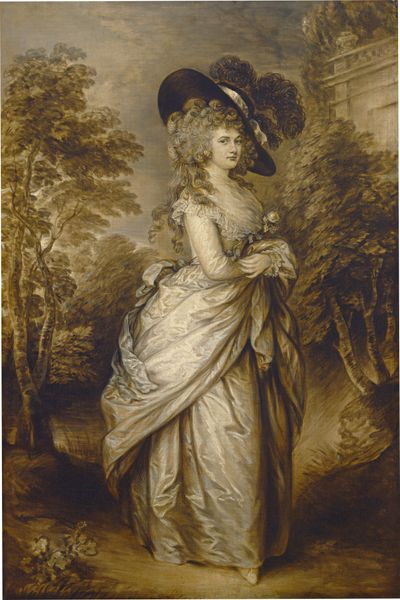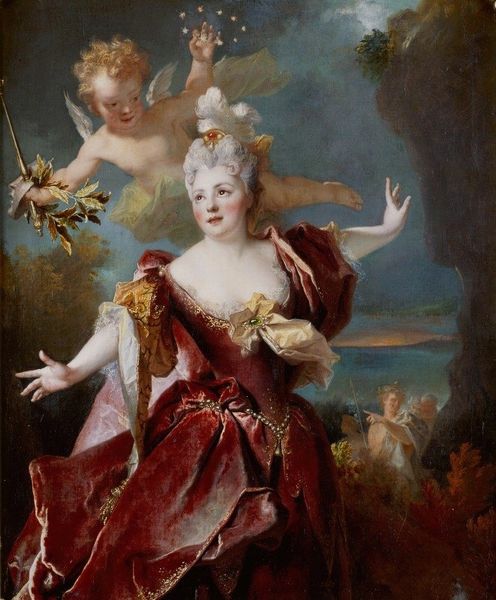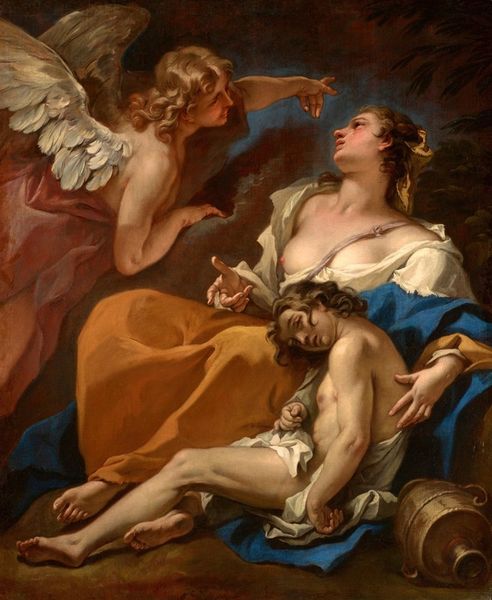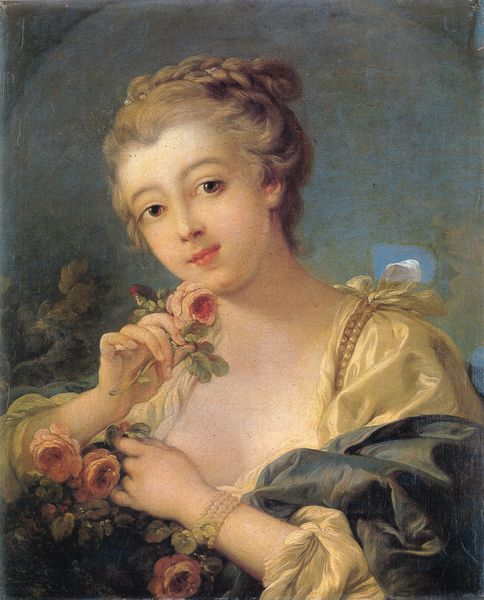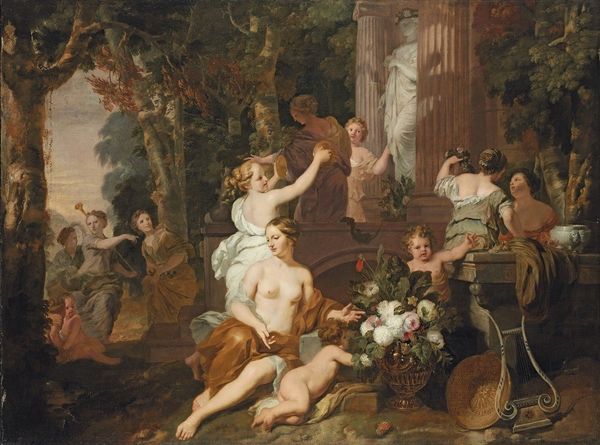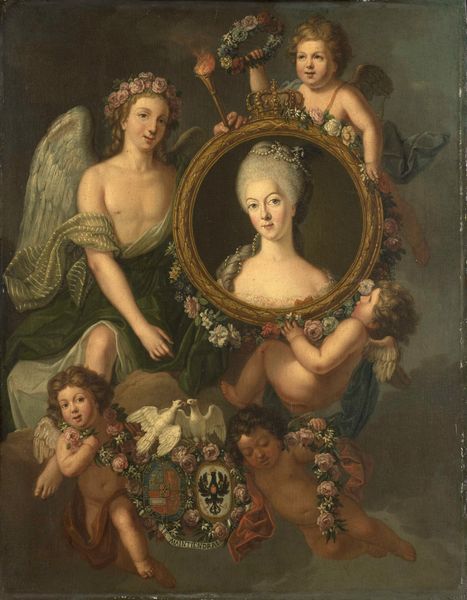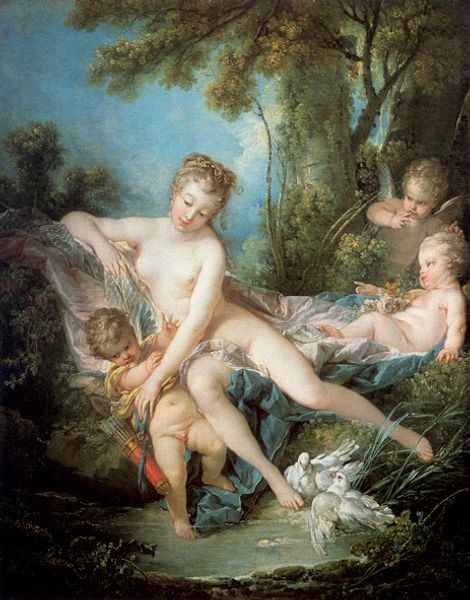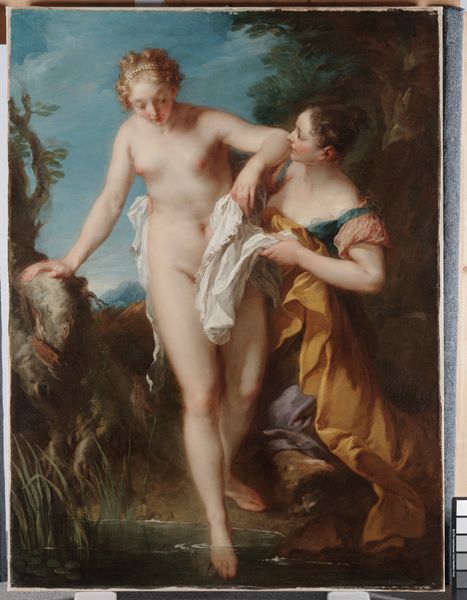
gouache, oil-paint
#
portrait
#
gouache
#
fairy-painting
#
allegory
#
gouache
#
oil-paint
#
oil painting
#
watercolor
#
rococo
Dimensions: 235 mm (height) x 184 mm (width) (billedmaal)
Editor: So, here we have "Foråret," made sometime between 1675 and 1775, currently at the SMK. It looks to be oil and gouache on, perhaps, vellum or a similarly fine material. It gives me a light, airy feeling – very Rococo. What catches your eye when you look at this piece? Curator: I immediately consider the gouache. It allows for an incredible level of detail, mimicking the softness of the fabrics and the model’s skin. Given the social context, this likely demanded great skill and time, which tells us a lot about patronage and who could afford such detailed work. Editor: That's a great point. The application looks so delicate. Does that precision have any other implications, beyond its display of skill? Curator: Absolutely! Think about the labor involved. Was this artisan trained in a workshop? Who mixed the pigments? Were those pigments local or imported, indicating trade networks? The artist’s hand and choices highlight both their creative decisions and their socio-economic circumstances. How might this approach affect the artwork's traditional interpretation? Editor: That makes me rethink its simplicity! Focusing on materials and labour, reveals this surface aesthetic masks complex underlying networks. Curator: Precisely. The very 'springlike' quality of the scene points to a cycle of consumption inherent within court society. Reflect on those links - between material, labor, consumption and visual pleasure - and new interpretations bloom. Editor: Fascinating! Considering the materials and process gives us a much richer understanding. Curator: Exactly, by deconstructing art through its materiality we connect aesthetic appreciation to lived realities.
Comments
No comments
Be the first to comment and join the conversation on the ultimate creative platform.
